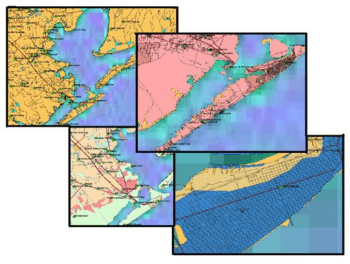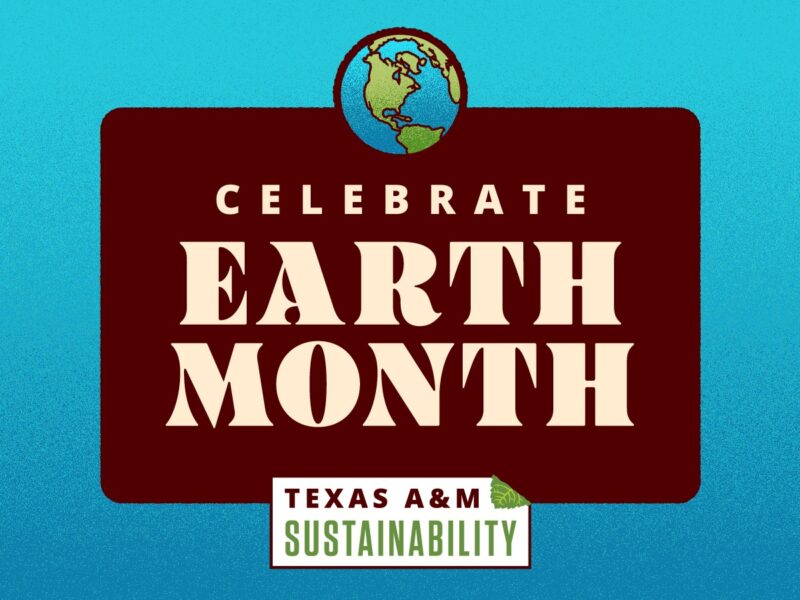Researchers Map Risks Of Rising Coastal Waters
 Texas A&M University professors are knee deep in research about rising waters. They’re uncovering vital information to help protect lives, property and the natural environment of coastal dwellers. Their latest project is looking at flood risks in 100-year flood plains near the coast. Urban planning professors Samuel Brody and Michael Lindell and Assistant Marine Sciences Professor Wesley Highfield are part of the Institute for Sustainable Coastal Communities. It is an initiative between the College of Architecture’s Hazard Reduction Recovery Center at Texas A&M University and faculty at Texas A&M University at Galveston. Institute researchers can help prepare coastal communities to absorb, adapt and respond to disturbances such as hazardous events, hurricanes, coastal storms and flooding. They are in the second year of a two-year $313,000 National Science Foundation grant to investigate the accuracy of the 100-year flood plain measurement.
Texas A&M University professors are knee deep in research about rising waters. They’re uncovering vital information to help protect lives, property and the natural environment of coastal dwellers. Their latest project is looking at flood risks in 100-year flood plains near the coast. Urban planning professors Samuel Brody and Michael Lindell and Assistant Marine Sciences Professor Wesley Highfield are part of the Institute for Sustainable Coastal Communities. It is an initiative between the College of Architecture’s Hazard Reduction Recovery Center at Texas A&M University and faculty at Texas A&M University at Galveston. Institute researchers can help prepare coastal communities to absorb, adapt and respond to disturbances such as hazardous events, hurricanes, coastal storms and flooding. They are in the second year of a two-year $313,000 National Science Foundation grant to investigate the accuracy of the 100-year flood plain measurement.
The Safety Zone
Brody, who is director for the institute and principal investigator on the NSF grant, says many people believe significant environmental damage and the loss of life and property from recent Gulf coast hurricanes is confined to the 100-year flood plain, but their research is proving otherwise. “The floodplain designation may be an inaccurate predictor of loss,” Brody said. “Our research findings about the 100-year flood plain will provide policy makers and localities with improved criteria for assessing flood risk in low-lying coastal areas and protecting themselves against loss of property and lives.”
Safety In The Eye Of The Beholder
Brody says misperceptions of safety afforded by the 100-year designation have left property owners unaware of flood risk and made it more difficult for decision makers to ensure that community development occurs in a resilient manner. The research team is analyzing the following data samples in Texas and Florida coastal communities:
- Insured property damage records
- Proximity of damage claims to 100-year flood plain
- Impact of development patterns upon flooding in Gulf of Mexico coastal counties
- Household survey information about flooding in and out of the floodplain, flooding experiences, risk perceptions, flood insurance purchases, emergency preparedness actions and the effectiveness and cost of flood mitigation and preparedness actions.
“Collecting data about different aspects of people’s flood insurance purchase will help us better understand why people fail to protect against flood losses and, in some cases, discontinue their flood insurance policies years after first purchasing it,” Lindell said. After gathering the data researchers layered information into a Geographic Information System to better understand characteristics of flood losses in relation to delineated flood zones. Preliminary research findings challenge perceptions that living outside 100-year flood plains will ensure safety from storms. “From 1999 to 2009, flood losses along the Gulf of Mexico, totaled more than $20.3 billion,” Brody said. “Up to half of insured flood claims in the Houston-Galveston region were located outside the 100-year flood plain.” “There is a reduction in the cost of damage a quarter of a mile outside the floodplain,” said Highfield. “But, it still left an average repair cost of $25,000 per property.”
Safety Near Urban Sprawl
Brody said sprawling, low intensity development with four to 21 percent impermeable surfaces like parking lots significantly increased losses from flooding in study areas. He confirmed that flood damage was reduced, where natural environments are embedded in developed areas. The Institute for Sustainable Coastal Communities provides coastal communities public participation and education opportunities, web-based sustainable information and graduate and undergraduate education materials.
For more information about the ISCC go to www.tamug.edu/iscc
Media contact: Cathy Cashio-Bertrand, Texas A&M University at Galveston.





